Difference between revisions of "Leather dye - Leather color - Leather colour"
| Line 89: | Line 89: | ||
[[Leather damages]] always get visible. Only with strong contrasts it is a deterioration. | [[Leather damages]] always get visible. Only with strong contrasts it is a deterioration. | ||
| − | In the times of vegetable tanned | + | In the former times of [[vegetable-tanned leather]], the non-performed through coloration resulted in beautiful [[Antique Leather - Vintage Leather|patina effects]], which the more modern leather no longer have. |
| − | + | ||
| − | + | ||
| − | + | ||
| − | + | ||
| − | + | ||
| − | + | ||
| Line 103: | Line 97: | ||
</p> | </p> | ||
<p align=center> | <p align=center> | ||
| − | ''[[ | + | ''[[vegetable-tanned leather|vegetable-tanned]], only top pigmented [[Vintage & Classic car leather|classic car leather]] with [[Antique Leather - Vintage Leather|patina]]. - Modern [[car leather]] with [[leather damages#Signs of wear on leather|damages of use]].''<br></p> |
<p> </p> | <p> </p> | ||
| Line 111: | Line 105: | ||
</p> | </p> | ||
<p align=center> | <p align=center> | ||
| − | ''[[ | + | ''[[leather damages#Signs of wear on leather|Signs of wear]] are always visible. A all through-colouration does not prevent this.''<br></p> |
<p> </p> | <p> </p> | ||
| Line 118: | Line 112: | ||
</p> | </p> | ||
<p align=center> | <p align=center> | ||
| − | '' | + | ''This leather is not dyed all through. That is normal for [[thick leather]] and not a sign of bad [[leather quality]].''<br></p> |
<p> </p> | <p> </p> | ||
| Line 126: | Line 120: | ||
</p> | </p> | ||
<p align=center> | <p align=center> | ||
| − | '' | + | ''This leather is not dyed through. The dye was only sprayed on the top. This is a sign for cheap and low quality leather.''<br></p> |
<p> </p> | <p> </p> | ||
| Line 133: | Line 127: | ||
</p> | </p> | ||
<p align=center> | <p align=center> | ||
| − | '' | + | ''This leather was first dyed black and afterwards dyed dark brown again. This is a rare method. The reason may have been the reuse of leftover black dyed leather.''<br></p> |
<p> </p> | <p> </p> | ||
| Line 141: | Line 135: | ||
</p> | </p> | ||
<p align=center> | <p align=center> | ||
| − | '' | + | ''Extreme case: This [[sheep leather]] jacket was first sewn and then the white leather was coloured grey. The post-corrections are very spotty.''<br></p> |
<p> </p> | <p> </p> | ||
| − | ==[[ | + | ==[[finish|Finish - Surface binder based pigmentation]]== |
| − | + | Leather heaving the risk of getting wet and dirty gets a protective [[finish|pigment layer]] on the surface after the dyeing. This is usually sprayed on. Almost all [[car leather]], [[leather furniture|furniture leather]], but also [[Leather bag|bags]], [[leather clothing|clothing]] and [[leather shoes|shoe leather]] often have a protective pigment layer on top of the [[Leather grain - Grain side|grain side]]. This pigmentation is usually recognized by the fact that a rubbed on drop of water does not penetrate into the surface. | |
| Line 152: | Line 146: | ||
</p> | </p> | ||
<p align=center> | <p align=center> | ||
| − | '' | + | ''Strong pigmented leather is [[Waterproofing leather|waterproofed]] by the [[Finish|binder based colour layer]].''<br></p> |
<p> </p> | <p> </p> | ||
| Line 164: | Line 158: | ||
</p> | </p> | ||
<p align=center> | <p align=center> | ||
| − | '' | + | ''Coloring old and damaged leather in the workshop. In the [[tannery]] is dyed with rotating spray heads.''<br></p> |
<p> </p> | <p> </p> | ||
| − | + | Depending on the thickness of the applied pigment layer, the smooth leather is referred differently. | |
| + | * No pigment based top colouration: [[Aniline leather]] | ||
| + | * Little pigmentation, but hair pores still well recognizable: [[Semi-aniline]] | ||
| + | * Thick colouration and hair pores only little or not recognizable: [[finish|Pigmented leather]]. | ||
| − | [[ | + | [[Aniline leather]] may have a pigment-free coating of a maximum thickness of 0.01 mm (= 10 micrometer (μm)). A normal pigmentation has a thickness of 0.035 to 0.04 mm. For [[car leather|automotive leather]], the thickness of the colour layer is rather 0.1 mm. Above 0.15 mm thickness of the coat, the leather must be referred "[[leather#The layer thickness and the ratio of different layers|coated leather]]". |
| + | <p align=center> | ||
<p align=center> | <p align=center> | ||
[[bild:Anilin-Poren-01.jpg|250px]] | [[bild:Anilin-Poren-01.jpg|250px]] | ||
| Line 177: | Line 175: | ||
</p> | </p> | ||
<p align=center> | <p align=center> | ||
| − | + | ''Pure [[aniline leather]]: [[Leather hair pores - Hair follicles|Pores]] are completely recognisable and no [[Finish|finish]] is on the leather.''<br></p> | |
<p> </p> | <p> </p> | ||
| Line 185: | Line 183: | ||
</p> | </p> | ||
<p align=center> | <p align=center> | ||
| − | [[ | + | ''[[Semi-aniline|Semi-aniline leather]]: [[Leather hair pores - Hair follicles|Pores]] are clearly visible, but a thin [[finish|layer of paint]] is on the leather surface.''<br></p> |
<p> </p> | <p> </p> | ||
| Line 193: | Line 191: | ||
</p> | </p> | ||
<p align=center> | <p align=center> | ||
| − | [[ | + | ''[[Leather hair pores - Hair follicles|Pores]] are hardly recognisable. A stronger [[Leather colour|colour layer]] is on the leather surface. Only a leather consultant or expert can investigate whether this leather still may be referred as [[Semi-aniline|semi-aniline leather]].''<br></p> |
<p> </p> | <p> </p> | ||
| Line 201: | Line 199: | ||
</p> | </p> | ||
<p align=center> | <p align=center> | ||
| − | [[ | + | ''[[Finish|Pigmented]] [[Smooth leather|smooth leather]]: [[Leather hair pores - Hair follicles|Pores]] |
| + | are no longer recognisable. A thick [[Leather colour|layer of paint]] is on the leather.''<br></p> | ||
<p> </p> | <p> </p> | ||
Revision as of 20:48, 21 January 2017
Contents
- 1 Leather Colour - Leather Color - Leather Dye
- 2 Dyed leather
- 3 Finish - Surface binder based pigmentation
- 4 Leder bemalen - Leder bedrucken
- 5 The colouring of the hair of hides and fur
- 6 Coated leather - Laminated leather
- 7 Additional information
- 8 Problems of leather colourations
- 9 Video about the color restoration of leather colour damages
- 10 Video about colour separation of leather and dye transfer from leather
- 11 Video about the peculiarities of metallic effects on leather
- 12 Video about leather production
Leather Colour - Leather Color - Leather Dye
The color of a leather is initially dependent on the used tanning agents. Tannnins of plants colour the leather brownish, fat and oil tanning makes yellowish, tawing with alum and synthetic tanning agents colours the leather whitish and the chrome tanning bluish-grayish. After tanning, the leather is dyed to meet customer requirements for colorful leather. In the coloration of leather, two main coloring methodes are distinguished: The through-dyeing whith dyes and the surface pigmentation with binder based colours.
Dyeing throug of the leather by chrome tanning, vegetable tanning or synthetic tanning.
Dyed leather
After tanning, most leather is first dyed completely throug. This is done in dye stuff (liquid dye like ink for colouration of textile). For this purpose, the leather is immersed in a dye bath in rotating barrels (= drum dyed). The dye has to be fixed and excess color has to be rinsed to prevent dye transfer from leather.
Aniline dye is a transparent liquid which is swallowed by the leather without forming a coating layer. All absorbent leather types (suede, nubuck and aniline leather) are dyed this way. Top grained absorbent porous leather is called aniline. But also most pigmented (with coating layer) leather are first dyed through.
Since these dyes are transparent, these dyes can only be be used to dye darker. Aniline dye is usually referred to as "aniline colour". Previously azo dyes were used as aniline paints. However, this azo dyestuff (coal tar dyestuffs) is not allowed since a long time because of their harmfulness to health.
Components of the leather colouration and the finish.
Smooth leather, which does not receive any additional pigment based color layer on the surface, is called aniline leather. Such leather is dyed, but has no other protective colour layer on the surface.
Nubuck and suede are only dyed. Sometimes, patterns are printed and embossed on nubuck. In the area of the prints, it is then pigmented and smooth. Such embossed nubuck was very popular with furniture in the 90s.
Smooth leather is dyed so that mechanical damages of the finish has a similar color tone in the area of the damage. Such leather is called drum dyed. Leather, where the surface coloration does not correspond well enough to the dying thorough colour or is ignored for reasons of cost, is regarded as leather of poorer quality. Nevertheless, scratches are almost always visible due to the refraction in the area of damage. But with nearly the same colouration it is less than in the case of deviant colourations.
Drum dying.
These leathers were not dyed at all, or little suited.
Leather of better qualities are dyed to match the coloration of the finish.
Most leather has same colour on top and inside. But deviations are sometimes desired. It is because the leather is multi-colored (e.g., antique leather), or because it is adesired design elements.
Typical antique leather.
Wish of the designer: Perforated red leather with a black surface pigmentation.
Leather damages always get visible. Only with strong contrasts it is a deterioration.
In the former times of vegetable-tanned leather, the non-performed through coloration resulted in beautiful patina effects, which the more modern leather no longer have.
vegetable-tanned, only top pigmented classic car leather with patina. - Modern car leather with damages of use.
Signs of wear are always visible. A all through-colouration does not prevent this.
This leather is not dyed all through. That is normal for thick leather and not a sign of bad leather quality.
This leather is not dyed through. The dye was only sprayed on the top. This is a sign for cheap and low quality leather.
This leather was first dyed black and afterwards dyed dark brown again. This is a rare method. The reason may have been the reuse of leftover black dyed leather.
Extreme case: This sheep leather jacket was first sewn and then the white leather was coloured grey. The post-corrections are very spotty.
Finish - Surface binder based pigmentation
Leather heaving the risk of getting wet and dirty gets a protective pigment layer on the surface after the dyeing. This is usually sprayed on. Almost all car leather, furniture leather, but also bags, clothing and shoe leather often have a protective pigment layer on top of the grain side. This pigmentation is usually recognized by the fact that a rubbed on drop of water does not penetrate into the surface.
Strong pigmented leather is waterproofed by the binder based colour layer.
Coloring old and damaged leather in the workshop. In the tannery is dyed with rotating spray heads.
Depending on the thickness of the applied pigment layer, the smooth leather is referred differently.
- No pigment based top colouration: Aniline leather
- Little pigmentation, but hair pores still well recognizable: Semi-aniline
- Thick colouration and hair pores only little or not recognizable: Pigmented leather.
Aniline leather may have a pigment-free coating of a maximum thickness of 0.01 mm (= 10 micrometer (μm)). A normal pigmentation has a thickness of 0.035 to 0.04 mm. For automotive leather, the thickness of the colour layer is rather 0.1 mm. Above 0.15 mm thickness of the coat, the leather must be referred "coated leather".
Pure aniline leather: Pores are completely recognisable and no finish is on the leather.
Semi-aniline leather: Pores are clearly visible, but a thin layer of paint is on the leather surface.
Pores are hardly recognisable. A stronger colour layer is on the leather surface. Only a leather consultant or expert can investigate whether this leather still may be referred as semi-aniline leather.
Pigmented smooth leather: Pores
are no longer recognisable. A thick layer of paint is on the leather.
Mit Pigmenten kann man so ziemlich alle Lederfarben darstellen. Es gibt Lederfarben mit Leuchteffekten oder Metalliceffekten. Auf die Pigmentschicht kommt noch ein transparenter Schutzlack, der Top Coat. Er steuert die Stabilität und den Glanzgrad des Leders. Eine Pigmentschicht auf einem Leder macht ein Leder aber immer weniger weich. Ein pigmentiertes Leder fühlt sich „kälter“ an. Daher muss der Gerber immer entscheiden, ob das Leder eher pflegeleicht oder haptisch schön sein soll. „Superweich“ und „sehr pflegeleicht“ geht nach dem heutigen Stand der Technik nicht.
Die meisten pigmentierten Leder sind unter der Pigmentierung trotzdem durchgefärbt. Das macht man, damit die mit der Zeit entstehenden Gebrauchsspuren nicht einen zu starken Kontrast haben. Ganz verhindern lässt sich die optische Wahrnehmung von Gebrauchsspuren dadurch aber nicht.
Grundfarben der Pigmentfarben für Leder (von www.lederzentrum.de).
Leuchtfarbe als Lederfarbe (von www.lederzentrum.de). Solche Farben werden z.B. bei Motorradkombis verwendet.
Durch Metalliceffekte als Zugabe zum Top Coat, kann man die Lederfarbe verändern. Erhältlich bei lederzentrum.de.
Bunte Einfärbungen in der Lederwerkstatt.
Leder bemalen - Leder bedrucken
Um Leder farblich zu gestalten gibt es die verschiedensten Möglichkeiten. Leder kann bedruckt werden, es kann bemalt werden, aber auch Lasern, Ätzen und Tätowieren kommt zum Einsatz.
Bemalter Ledersessel von Torsten Russ www.torstenruss.de, bedruckter Lederschuh.
The colouring of the hair of hides and fur
Das Leder kann nicht nur durchgefärbt werden oder mit einer Farbschicht versehen werden, auch Felle können aus Designgründen gefärbt werden. Meist werden Kuhfelle so verarbeitet.
Coloured hair of a cowhide.
Coated leather - Laminated leather
In some manufacturing processes, colored films are adhered to the leather. This procedure is carried out at patent leather or PU-leather.
Rather cheap leather is foil-coated.
Additional information
- Painting on leather
- Printing on leather
- Crackled leather - Crackle finished leather
- Metallic leather
- Ironing leather
- Glazing leather
- Gloss of leather
- Metamerism
- Ready to dye - RTD
Problems of leather colourations
- Leather with stains caused by glue migration
- Dye transfer from leather
- Colour separation of leather
- Typical PU leather damages
- Flamingo effect: Reddish discolouration with light furniture leather in hidden areas
- Bronzing: Metallic glimmer on new leather
Video about the color restoration of leather colour damages
Color refreshments for car, furniture and bag leather
![]() -> COLOURLOCK - TREATMENT OF FURNITURE LEATHER
-> COLOURLOCK - TREATMENT OF FURNITURE LEATHER
![]() -> COLOURLOCK - REPAIRING COLOUR DAMAGES ON CAR LEATHER
-> COLOURLOCK - REPAIRING COLOUR DAMAGES ON CAR LEATHER
![]() -> COLOURLOCK - TREATMENT OF LEATHER CASES AND BAGS
-> COLOURLOCK - TREATMENT OF LEATHER CASES AND BAGS
![]() -> In German: www.lederzentrum.de
-> In German: www.lederzentrum.de
![]() -> Rest of the world: partners worldwide
-> Rest of the world: partners worldwide
Video about colour separation of leather and dye transfer from leather
Video about the peculiarities of metallic effects on leather
Video about leather production
The leather production in a modern tannery.








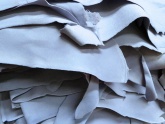
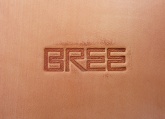
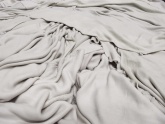

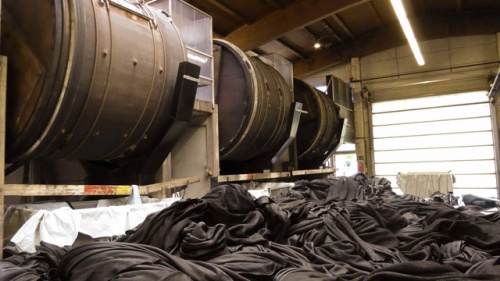






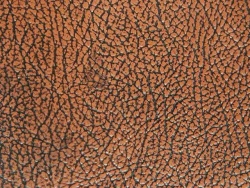
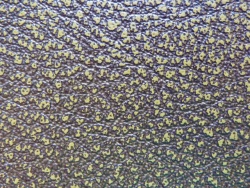
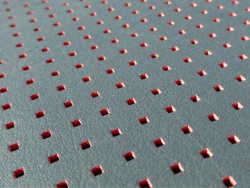
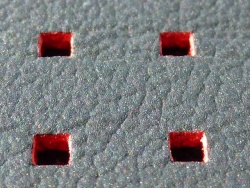
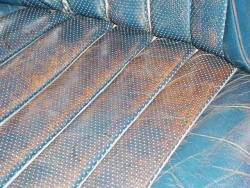
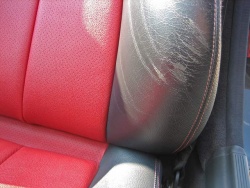
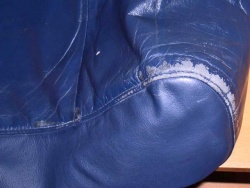
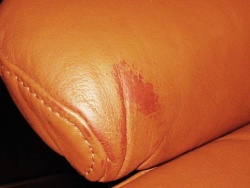
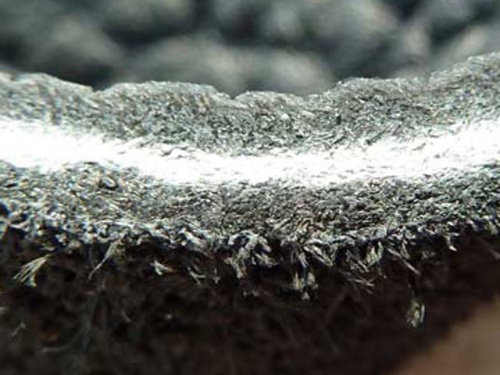
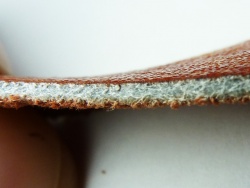
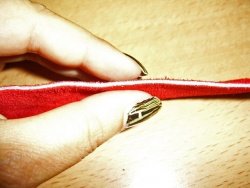
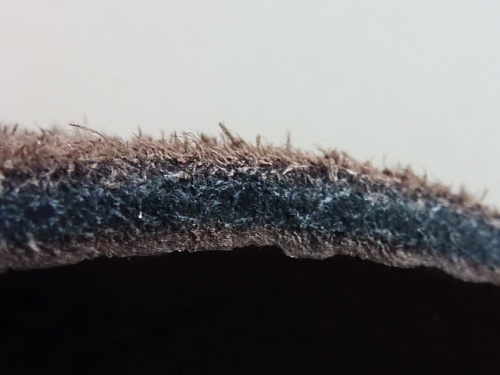
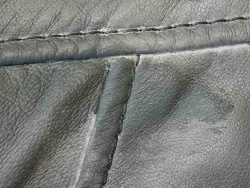
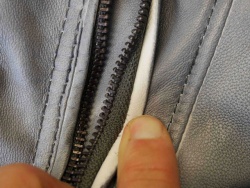
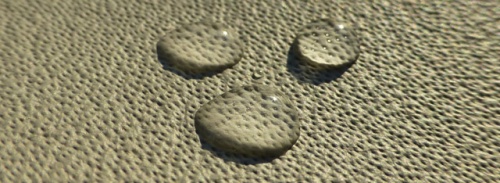
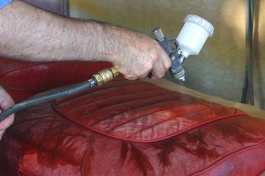
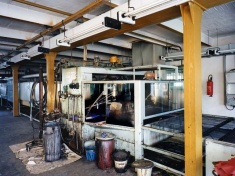
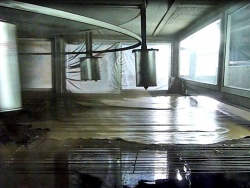
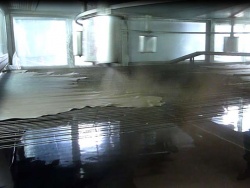
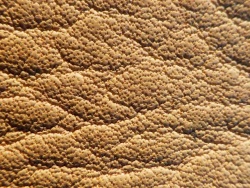
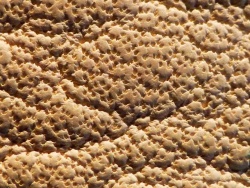
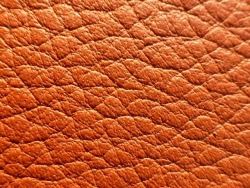
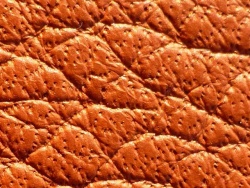
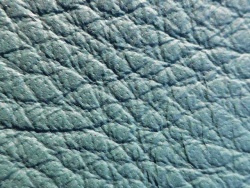
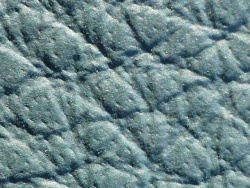
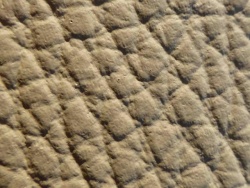
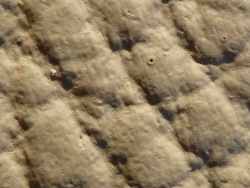
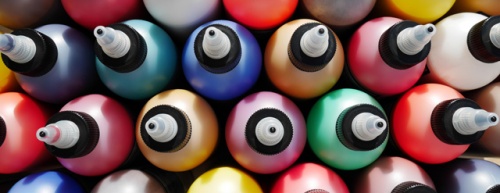






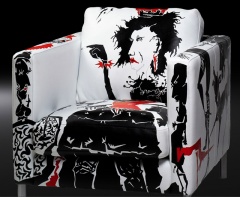
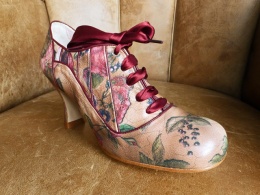
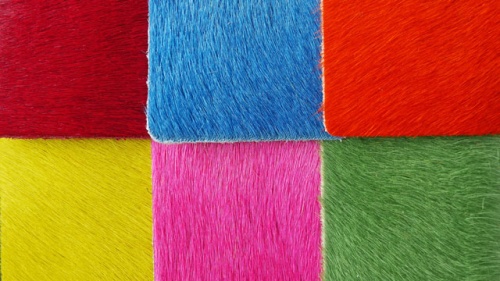
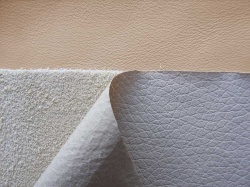
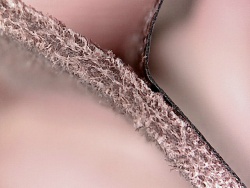

 a kotori web solution
a kotori web solution